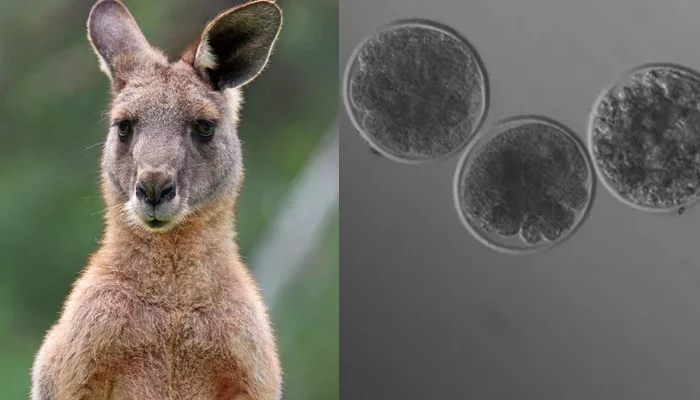In a groundbreaking scientific achievement, Australian researchers have successfully created the world’s first kangaroo embryo through in vitro fertilization (IVF). This milestone could pave the way for preserving endangered marsupial species, offering hope for biodiversity conservation.
A Landmark Breakthrough in Marsupial Conservation
Using specimens from eastern grey kangaroos, scientists at the University of Queensland successfully fertilized an egg by injecting a single sperm cell. While this is a major step forward, achieving a live birth remains a challenge requiring further research and technological advancements.
Lead researcher Dr. Andres Gambini emphasized the significance of this achievement, stating that the findings could play a crucial role in preserving the genetic diversity of endangered marsupials, including:
- Koalas
- Tasmanian devils
- Northern hairy-nosed wombats
- Leadbeater’s possums
Australia is home to the world’s largest variety of marsupial mammals, but it also has the highest rate of mammal extinctions. This research could be a game-changer in conservation efforts.
How Scientists Achieved This Feat
The experiment involved studying the growth of kangaroo eggs and sperm in a laboratory environment before using a method known as intracytoplasmic sperm injection (ICSI). This technique, already applied to humans and domestic animals, was tested on eastern grey kangaroos that had died naturally.
Why Eastern Grey Kangaroos?
Eastern grey kangaroos were chosen for the study because they are not endangered and have large populations, making them ideal for developing and refining techniques that could later be used on at-risk marsupial species.
The Future of IVF in Wildlife Conservation
IVF is increasingly being used to help preserve endangered species worldwide. Some notable successes include:
- World’s First IVF Rhino Pregnancy (2023): Scientists in Kenya successfully transferred a lab-created rhino embryo into a surrogate mother.
- First Donkey Embryo via IVF (2018): Researchers achieved the first successful donkey embryo through assisted reproduction.
Dr. Gambini and his team are now refining their techniques to collect, culture, and preserve marsupial eggs and sperm, ensuring the long-term survival of Australia’s unique and irreplaceable wildlife.
FAQs
1. What is the significance of this IVF breakthrough?
This is the first-ever successful IVF embryo in a kangaroo, offering new possibilities for marsupial conservation and helping endangered species by improving their genetic diversity.
2. Can this research help save endangered marsupials?
Yes. The knowledge gained from this research can be applied to species like koalas and Tasmanian devils, which are at risk due to habitat loss and disease.
3. What is ICSI, and how does it work?
Intracytoplasmic sperm injection (ICSI) is a fertilization technique where a single sperm cell is injected directly into an egg. It is commonly used in human IVF and has now been successfully tested on kangaroos.
4. When could we see a live kangaroo birth through IVF?
While the creation of an embryo is a major step, more research is needed to achieve a successful pregnancy and live birth. Scientists are working on refining the process.
5. Has IVF been used in other wildlife conservation efforts?
Yes. IVF has been successfully used in rhinos, donkeys, and other species, and this study marks a breakthrough for marsupials.
Conclusion
The development of the first IVF kangaroo embryo is a landmark achievement in wildlife conservation. While a live birth has not yet been achieved, this research opens doors for the preservation of endangered marsupial species. With further advancements, scientists hope to apply these techniques to ensure the survival of Australia’s unique and threatened wildlife for future generations.

